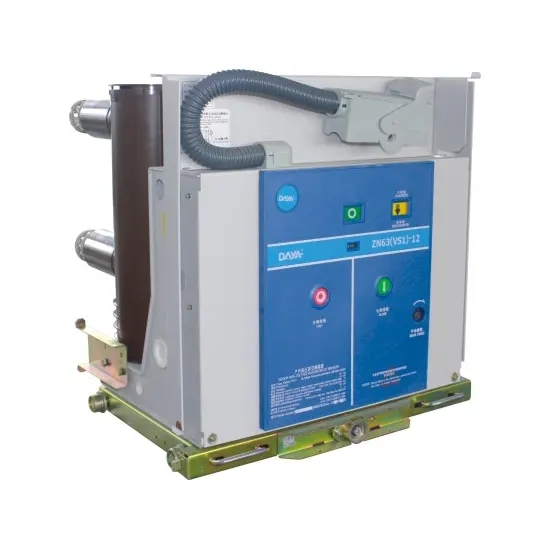 English
English Español
Español  Português
Português  русский
русский  Français
Français  日本語
日本語  Deutsch
Deutsch  tiếng Việt
tiếng Việt  Italiano
Italiano  Nederlands
Nederlands  ภาษาไทย
ภาษาไทย  Polski
Polski  한국어
한국어  Svenska
Svenska  magyar
magyar  Malay
Malay  বাংলা ভাষার
বাংলা ভাষার  Dansk
Dansk  Suomi
Suomi  हिन्दी
हिन्दी  Pilipino
Pilipino  Türkçe
Türkçe  Gaeilge
Gaeilge  العربية
العربية  Indonesia
Indonesia  Norsk
Norsk  تمل
تمل  český
český  ελληνικά
ελληνικά  український
український  Javanese
Javanese  فارسی
فارسی  தமிழ்
தமிழ்  తెలుగు
తెలుగు  नेपाली
नेपाली  Burmese
Burmese  български
български  ລາວ
ລາວ  Latine
Latine  Қазақша
Қазақша  Euskal
Euskal  Azərbaycan
Azərbaycan  Slovenský jazyk
Slovenský jazyk  Македонски
Македонски  Lietuvos
Lietuvos  Eesti Keel
Eesti Keel  Română
Română  Slovenski
Slovenski  मराठी
मराठी  Srpski језик
Srpski језик
What are the differences between circuit breakers?
2024-04-25
The circuit breaker is marked with QF in the circuit diagram. It can close and break various load circuits under normal conditions. It can also close and break the short-circuit current when a short-circuit fault occurs in the line. It can also meet the requirements of automatic reclosing. It has an arc extinguishing device with strong breaking capacity. However, the circuit breaker does not have an obvious disconnection point, and it is possible that the circuit breaker is closed but the contacts cannot be opened. High-voltage vacuum circuit breakers are also prone to vacuum tube breakdown and overcurrent after disconnection, so the electricity must be checked after the circuit breaker is turned on.
There are many types of circuit breakers. According to different classification methods, it can be divided into many categories such as low-voltage circuit breakers and high-voltage circuit breakers. According to the arc extinguishing medium, it can be divided into oil-immersed type, vacuum type and air type. According to the level, it can be divided into single level, two level, three level and four level. According to the installation method, it can be divided into plug-in type, fixed type and drawer type. According to the volume and appearance, we can divide them into small circuit breakers (one phase, two phases, three phases, four phases) molded case circuit breakers and withdrawable circuit breakers.
One-phase circuits have only one power line and one load line and are suitable for residential and household circuits such as lighting, sockets, and small appliances.
Two-phase: A two-phase circuit has two power lines and a load line. It is mainly used in some small and medium-sized commercial and industrial places, such as small factories, supermarkets, etc.
Three-phase: Three-phase circuits have three power lines and three load lines and are widely used in large industrial and commercial buildings, such as power transmission and distribution networks, large factories, hospitals, shopping malls, etc.
Four-phase: A four-phase circuit contains four power lines and four load lines. It is relatively rarely used and is generally used to power circuits in some special circumstances, which can achieve higher power transmission efficiency.
Miniature circuit breakers, molded case circuit breakers and drawer circuit breakers are all circuit protection devices. Their main differences are in the following aspects:
Design type: Miniature circuit breaker is a switch-type circuit protector, usually installed on modular terminal equipment, such as air conditioners, ovens, etc.; Molded case circuit breaker is a switch-type circuit protector with a plastic shell. Usually installed in residential, commercial and industrial electrical equipment; while the withdrawable circuit breaker is a multi-functional circuit protector usually installed on industrial control equipment or large industrial equipment.
Installation method: Small circuit breakers and molded case circuit breakers are generally installed in a fixed manner and are fixed on the equipment base through screws. Drawer-type circuit breakers are usually movable and installed on movable equipment drawers or brackets.
Scope of use: Small circuit breakers are usually suitable for low-voltage circuits, such as air conditioners, exhaust fans, lighting equipment, etc.; molded case circuit breakers have a wider range of use and are usually used in residential, commercial and industrial electrical equipment for overload and Short circuit protection; withdrawable circuit breakers are usually used in modern industrial control systems for the protection of machines and equipment.
Electrical parameters: Different types of circuit breakers have different electrical parameters, such as rated voltage, rated current, short-circuit protection capacity, rated number of operations, etc.




